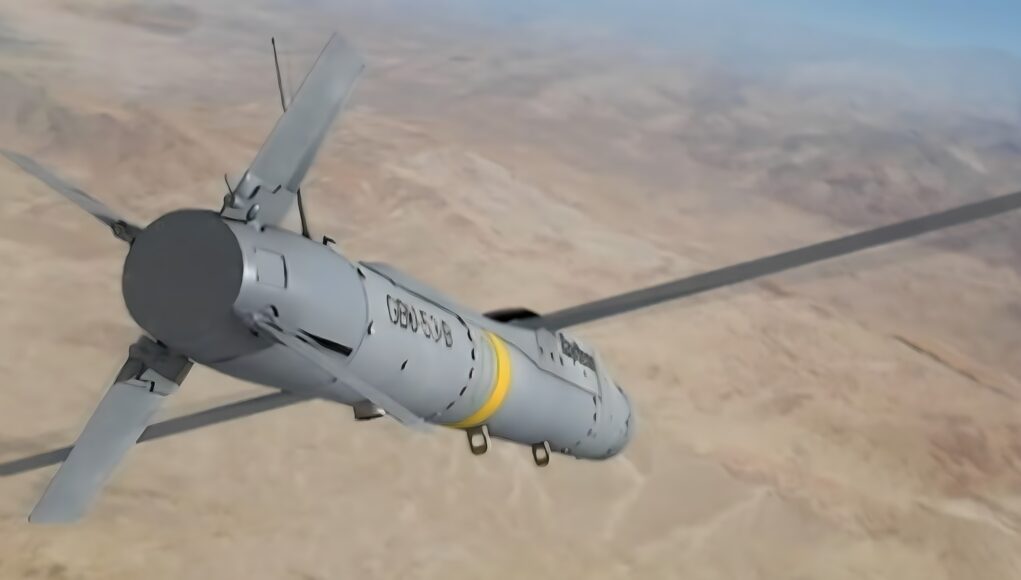The US State Department has approved a potential Foreign Military Sale to Belgium involving Small Diameter Bomb-Increment II (SDB-II) and related logistical support, valued at an estimated $115 million.
This decision, announced on July 25, 2024, was accompanied by the necessary certification to Congress by the Defense Security Cooperation Agency (DSCA).
Belgium has requested to purchase up to 196 Guided Bomb Units (GBU)-53/B SDB-II All-Up-Rounds (AURs). The proposed sale package also includes Weapons Load Crew Trainers (WLCT), training aids, spare and repair parts, consumables, unclassified software, publications, major modifications, training equipment, munitions support, transportation, and both US Government and contractor support services.
“This proposed sale will support the foreign policy goals and national security objectives of the United States by improving the security of a NATO Ally that is a force for political stability and economic progress in Europe,” the DSCA noted. The agency further noted that “the proposed sale will improve Belgium’s capability to meet current and future threats by maintaining its F-35 fleet in combat-ready status and providing a credible deterrent to regional threats.”
The DSCA stated that Belgium will have no difficulty absorbing these articles and services into its armed forces and that the sale “will not alter the basic military balance in the region.”
RTX Corporation, based in Arlington, VA, will be the principal contractor for this deal. The DSCA also noted, “There are no known offset agreements proposed in connection with this potential sale,” and assured that “implementation of this proposed sale will not require the assignment of any additional US Government or contractor representatives to Belgium.”
Additionally, the DSCA highlighted that this proposed sale would have no adverse impact on US defence readiness. The final cost will depend on specific requirements, budget allocations, and the terms of the signed sales agreements.
On its website, the U.S. Navy said:
“The GBU-53/B SDB II is an air-launched, precision-strike standoff weapon that will enable the warfighter to defeat moving and fixed targets in adverse weather conditions. Using a GPS/INS system to guide to the vicinity of a moving target, the weapon has the capability to receive updated target coordinates mid-flight via two-way datalink (Link-16 or UHF) communications.
Using these network options, SDB II allows airborne or ground controllers the ability to send in-flight target updates and the capability to abort a mission post-release.”














Isn’t this the same weapon the US gave to Uraine and in a short while the Russians jammed it ?
No, that was JDAM-ER. That’s a strap on kit to a standard mk82 type 500lb bomb (of which 10’s of thousands exist). These are half that size & are built as a complete unit. They likely would have similar problems.
JDAM-ER is getting an upgraded home on jamb system. The added problem for Ukraine is over reliance on GPS guidance due to only partial integration on aircraft. JDAM-ER does have INS, but requires a known starting point which the aircraft would normally supply. F16 should help markedly.
United States military and its allies already did decades ago with Military code, or M-code. In essence, the signals are encrypted and stronger than commercial GPS signals.
M-code was designed to further improve the anti-jamming and secure access of the military GPS signals by containing a PRN code of unknown length transmitted at 5.115 MHz. Unlike the P(Y)-code, the M-code is designed to be autonomous, meaning that a user can calculate their position using only the M-code signal. From the P(Y)-code’s original design, users had to first lock onto the C/A code and then transfer the lock to the P(Y)-code. Later, direct-acquisition techniques were developed that allowed some users to operate autonomously with the P(Y)-code.
The M-code is transmitted in the same L1 and L2 frequencies already in use by the previous military code, the P(Y)-code. The new signal is shaped to place most of its energy at the edges (away from the existing P(Y) and C/A carriers). It does not work at every satellite, and M-code was switched off for SVN62/PRN25 on 5 April 2011.
All these are to make it harder for US adversaries to “spoof” the GPS signals, since spoofing requires the fake transmitter to emulate the genuine signals.
There are also physical obstacles to spoofing by US adversaries: mainly the fake transmitters need to be higher up, encrypted and more powerful than the genuine ones. In Ukraine, Russians are able to spoof Ukrainian-made kamikaze drones but not American ones. Guided artillery shells like the Excalibur and GMLRS have no issues hitting targets since the apogees of these projectiles are very high compared to Russian GPS jammer UAVs. Ground-based Russian GPS jammers are particularly useless against American GPS-guided weapons. Of course, the converse is also true. It is also difficult to spoof Russian GLONASS-guided weapons.
GLONASS satellites transmit two types of signals: open standard-precision signal L1OF/L2OF, and obfuscated high-precision signal L1SF/L2SF. The signals use similar DSSS encoding and binary phase-shift keying (BPSK) modulation as in GPS signals. The more accurate high-precision signal is available for authorized users, such as the Russian military.
In a real war among adversaries between Russian vs US vs China, all GNSS satelites shall be destroyed.
The NATO countries have already been refitting their ordinance to prevent the Russians jamming. Anything build post 2011 has already been fitted with the same anti-GPS jamming hardware. According to the answers provided by a US expert wrote above.
Unfortunately that was all wishful thinking….
Excalibur in particular has suffered extensively due to jamming. RUSI reports that it went from over 75% effectiveness to around 5% as the Russian’s introduced more EW into theatre…
A lot of US supplied munitions do not have the full anti-spoof GPS systems….only now are they in full production and actually installed on new production….a lesson learned for the US there…
The adapted pylons used for JDAM, JDAM-ER and SDB1 release from MiG-29 and SU-27 in Ukrainian service have a GPS receiver built into the front to supply accurate positioning data prior to release…
The main issue appears to be the Ukrainian’s getting older stock that does not have the latest jam-resistance GPS systems onboard. US is switching production to these at present.
While I don’t doubt your information, I would point out that this is an add on feature to the SU-27. If it was working as it was supposed to, working on INS only, they (JDAM-ER) should be more accurate than they currently appear to be. So are they being jammed or spoofed (or both). If jammed, the INS is not performing as intended or the SU-27 is not providing accurate start coordinates. Either way, it’s something that needs to be sorted.
The weapons that have had issues are JDAM-ER, SDB1 and GLSDB (and Excalibur). All 3 have suffered more as post release they have a long flight to the target, and a slow one at that. More time and distance means more effect of spoofing.
However, SDB1 and JDAM have been accurate when used very close to front lines, like at Vovchansk as the lower flight time and, inevitably, distance from Russian jamming has allowed them to retain more accuracy.
Stormbreaker II/Small Diameter Bomb II is similar to SPEAR 3, but without the turbojet. The USAF wants 20,000 of them. Apparently the earlier version of Small Diameter Bomb actually did well under Russian jamming, though other GPS guided weapons had trouble.
Hmmm…GBU-53/B SDB-II @ $195K/missile (USAF FY 21). Not certain whether NATO FMS customers are entitled to USAF pricing, but, if so, presumably, $38.22Mn for 196 missiles. An interesting logistics tail cost delta to generate an estimate of $115Mn.
Twenty thousand for USAF would cost a cool $3.9Bn (plus all ancillary costs). As Sen. Dirksen once observed: “A billion here, a billion there, pretty soon it adds up to real money.” 🤔😳🙄
The USN eventually wants 7,500 for themselves as well.
SDB1 did well when released from aircraft…but not when released deeper into the rear from the GLSDB…
Probably due to proximity of Russian jamming stations in the rear where GLSDB would be used and lack of near the front where SDB would be useful.
196? Do they all have individual names? These are guided winged bombs (ie fancy glide bombs). Now, if they ordered 196 JSM, it would be notable.
$575,000 per bomb. Including additional elements.
This is incredibly overpriced.
How much would a similar order cost the Russians or Chinese?
The Russian’s and Chinese have no equivalent…
Wiki reports a USAF cost of $195K/ missile (FY21 data). No data re cost to FMS customers. Believe the majority of the $115Mn quote is the one time sunk cost to achieve FOC.